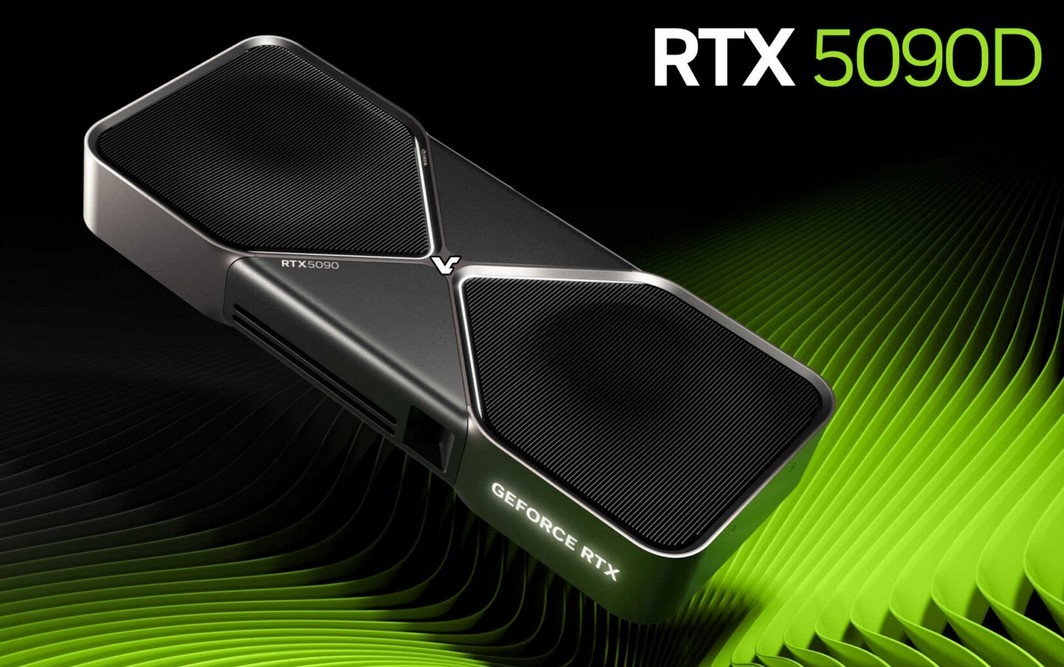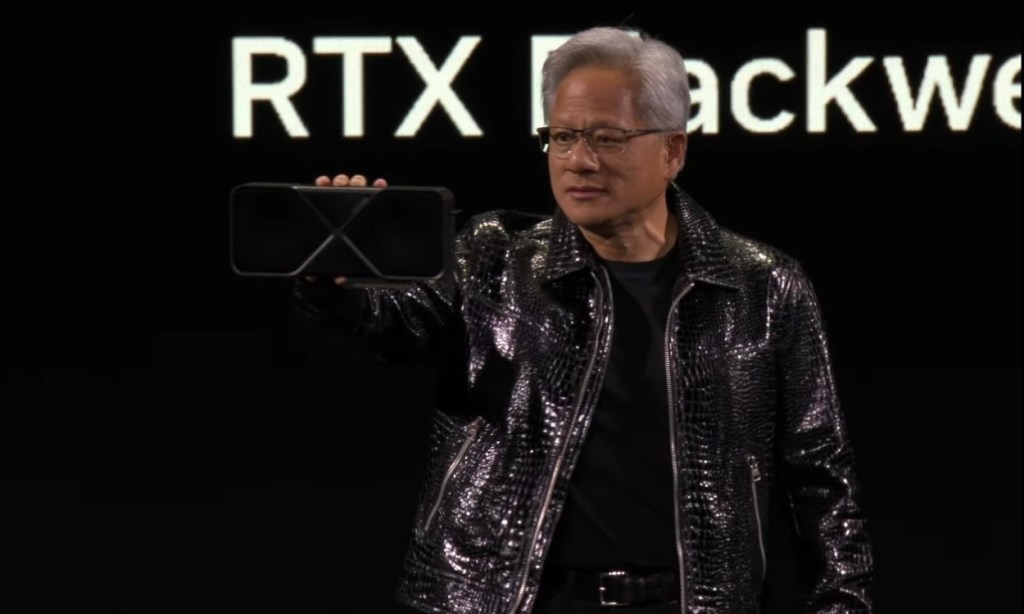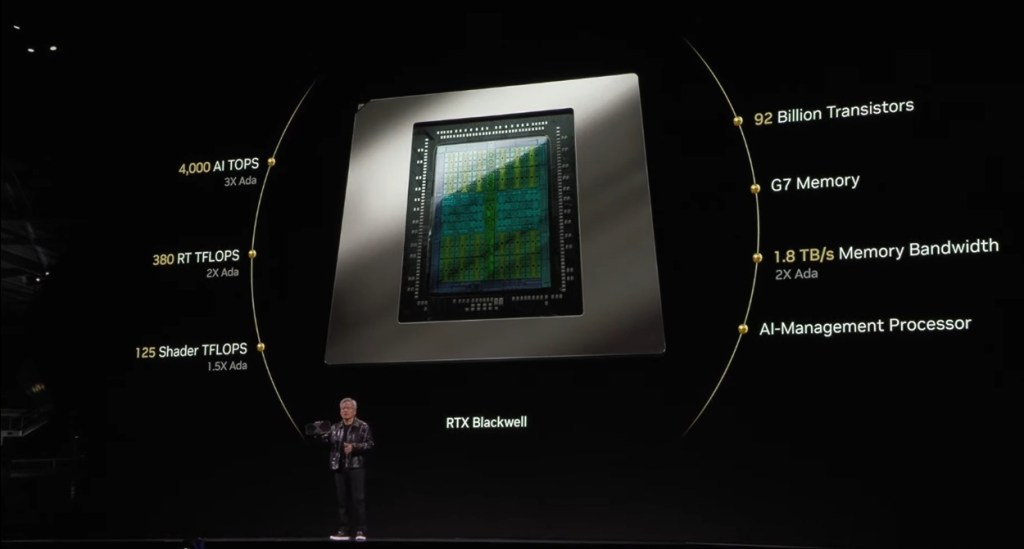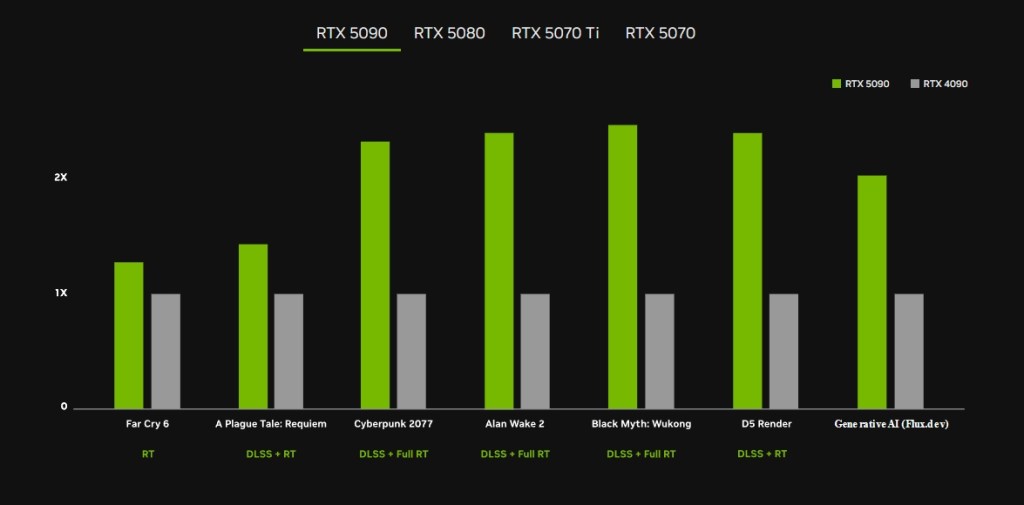经过对比,Nvidia RTX 5090 在多个方面相较于 RTX 4090 都有显著的提升。首先,RTX 5090 采用最新的 Blackwell 架构和先进的 4nm 制程技术,拥有更多的晶体管数量,达到 92 亿个。其次,它配备了更先进的 5th Generation Tensor Cores,AI 性能达到惊人的 3,352 AI TOPS,相较于 RTX 4090 的 1,321 AI TOPS,性能提升了约 2.5 倍。此外,在图形性能、游戏性能和 Ray Tracing 性能方面,RTX 5090 也领先 RTX 4090 约 50% 至 66%。最后,它还支持最新的 DLSS 4 技术,带来了卓越的游戏体验。然而,这些性能的提升也需要更高的功耗,RTX 5090 的 TDP 达到 575W,比 RTX 4090 高出不少。总的来说,Nvidia RTX 5090 是一款性能强大的显卡,可以满足专业用户和游戏玩家对高性能的需求。
Nvidia RTX 5090 vs 4090 详细参数对比 AI 算力5th Generation 3,352 AI TOPS VS 4th Generation 1,321 AI TOPS
Nvidia RTX 5090 vs 4090: Specs Comparison
Nvidia RTX 5090 vs 4090: Specs Comparison
| Specs | Nvidia GeForce RTX 5090 | Nvidia GeForce RTX 4090 |
|---|---|---|
| Architecture | Blackwell (GB202) | Ada Lovelace |
| Fabrication Process | TSMC N4P (4nm) | TSMC 4N (5nm) |
| Transistors | 92 Billion | 76.3 Billion |
| CUDA Cores | 21,760 | 16,384 |
| Shader Cores | 125 TFLOPS | 83 TFLOPS |
| Tensor Cores | 5th Generation 3,352 AI TOPS | 4th Generation 1,321 AI TOPS |
| Ray Tracing | 4th Generation 318 TFLOPS | 3rd Generation 191 TFLOPS |
| Clock Speed | 2.01GHz (Base) 2.41GHz (Boost) | 2.23GHz (Base) 2.52GHz (Boost) |
| DLSS | DLSS 4 | DLSS 3/3.5 |
| Memory | 32 GB GDDR7 | 24GB GDDR6X |
| Memory Bus | 512-bit | 384-bit |
| Memory Bandwidth | 1,792 GBps (1.8 TBps) | 1008 GBps (1 TBps) |
| TDP | 575W | 450W |
| Price | $1,999 | $1,599 |
| Release Date | January 2025 | October 2022 |
Nvidia RTX 5090 vs 4090: Architecture
First off, the Nvidia RTX 5090 is developed on the latest Blackwell architecture whereas the RTX 4090 is developed on the Ada Lovelace architecture. At this point, the Ada architecture is over two years old. In addition, RTX 5090 is manufactured on TSMC’s 4nm (N4P) process node, which results in 92 billion transistors on the die. On the other hand, RTX 4090 is fabricated on TSMC’s 5nm (4N) process node and packs around 76.3 billion transistors.

As for CUDA cores, RTX 5090 is the first Nvidia consumer GPU that features over 20,000 CUDA cores (21,760, to be precise). RTX 4090 houses 16,386 CUDA cores. Here, thanks to the Blackwell architecture and improved 4nm node, RTX 5090 packs 32% more transistors.
Overall, Nvidia says RTX 5090 delivers close to 2x better performance than its predecessor, RTX 4090. In AI workloads, the performance difference is nearly 3x. And all of this is possible at a lower frequency which is surprising. The RTX 5090 card has a peak frequency of 2.41GHz, slightly lower than the RTX 4090’s 2.52GHz peak clock speed.
Nvidia RTX 5090 vs 4090: Performance
Moving to performance, Nvidia has disclosed some numbers comparing the RTX 5090 and 4090. The Shader cores on RTX 5090 can deliver up to 125 TFLOPS whereas the RTX 4090 can output up to 83 TFLOPS. Here, RTX 5090 leads by 50%.
The 5th-gen Tensor cores on RTX 5090 can perform up to a whopping 3,352 trillion operations per second (TOPS) on AI workloads. The 4th-gen Tensor cores on RTX 4090 can process up to 1,321 AI TOPS, which means RTX 5090 is around 2.5x faster than RTX 4090 on AI tasks.

Next, the 4th-gen Ray Tracing cores on RTX 5090 can deliver graphics performance up to 318 TFLOPS. And the 3rd-gen RT cores on RTX 4090 deliver up to 191 TFLOPS. In Ray Tracing performance, the RTX 5090 leads by around 66%.
In gaming benchmarks that Nvidia shared, the company says RTX 5090 offers 2x better performance than RTX 4090 in titles like Cyberpunk 2077, Black Myth: Wukong, and Alan Wake 2. In a demo that Nvidia showcased, RTX 5090 with DLSS 4 produced 238 FPS in Cyberpunk 2077. The RTX 4090 with DLSS 3.5 could only reach up to 109 FPS.

As for Generative AI workloads, RTX 5090 again doubles the AI performance when running the Flux.dev image generation model locally.
Coming to DLSS 4, it brings a groundbreaking Multi Frame Generation feature which is only available on the RTX 50 series cards. However, other improved DLSS 4 features like Frame Generation, Ray Reconstruction, Super Resolution, etc. are available on RTX 40, 30, and 20 series cards.
